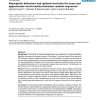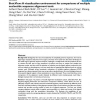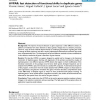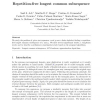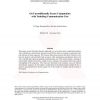BMCBI
2006
13 years 4 months ago
2006
Sequence homologs are an important source of information about proteins. Amino acid profiles, representing the position-specific mutation probabilities found in profiles, are a ri...
BMCBI
2006
13 years 4 months ago
2006
Background: The number of k-words shared between two sequences is a simple and effcient alignment-free sequence comparison method. This statistic, D2, has been used for the cluste...
BMCBI
2006
13 years 4 months ago
2006
Background: The problem of finding a Shortest Common Supersequence (SCS) of a set of sequences is an important problem with applications in many areas. It is a key problem in biol...
BMCBI
2006
13 years 4 months ago
2006
Background: Deluged by the rate and complexity of completed genomic sequences, the need to align longer sequences becomes more urgent, and many more tools have thus been developed...
BMCBI
2006
13 years 4 months ago
2006
Background: The imprint of natural selection on gene sequences is often difficult to detect. A plethora of methods have been devised to detect genetic changes due to selective pro...
ENDM
2008
13 years 4 months ago
2008
We study the problem of, given two sequences x and y over a finite alphabet, finding a repetitionfree longest common subsequence of x and y. We show several algorithmic results, a...
ALMOB
2006
13 years 4 months ago
2006
Given a set S of n locally aligned sequences, it is a needed prerequisite to partition it into groups of very similar sequences to facilitate subsequent computations, such as the ...
ALMOB
2006
13 years 4 months ago
2006
Background: Discovering approximately repeated patterns, or motifs, in biological sequences is an important and widely-studied problem in computational molecular biology. Most fre...
DM
2008
13 years 4 months ago
2008
Beatty sequences n + are nearly linear, also called balanced, namely, the absolute value of the difference D of the number of el
CORR
2010
Springer
13 years 4 months ago
2010
Springer
We propose a novel distortion-theoretic approach to a secure three-party computation problem. Alice and Bob have deterministic sequences, and Charlie wishes to compute a normalize...

